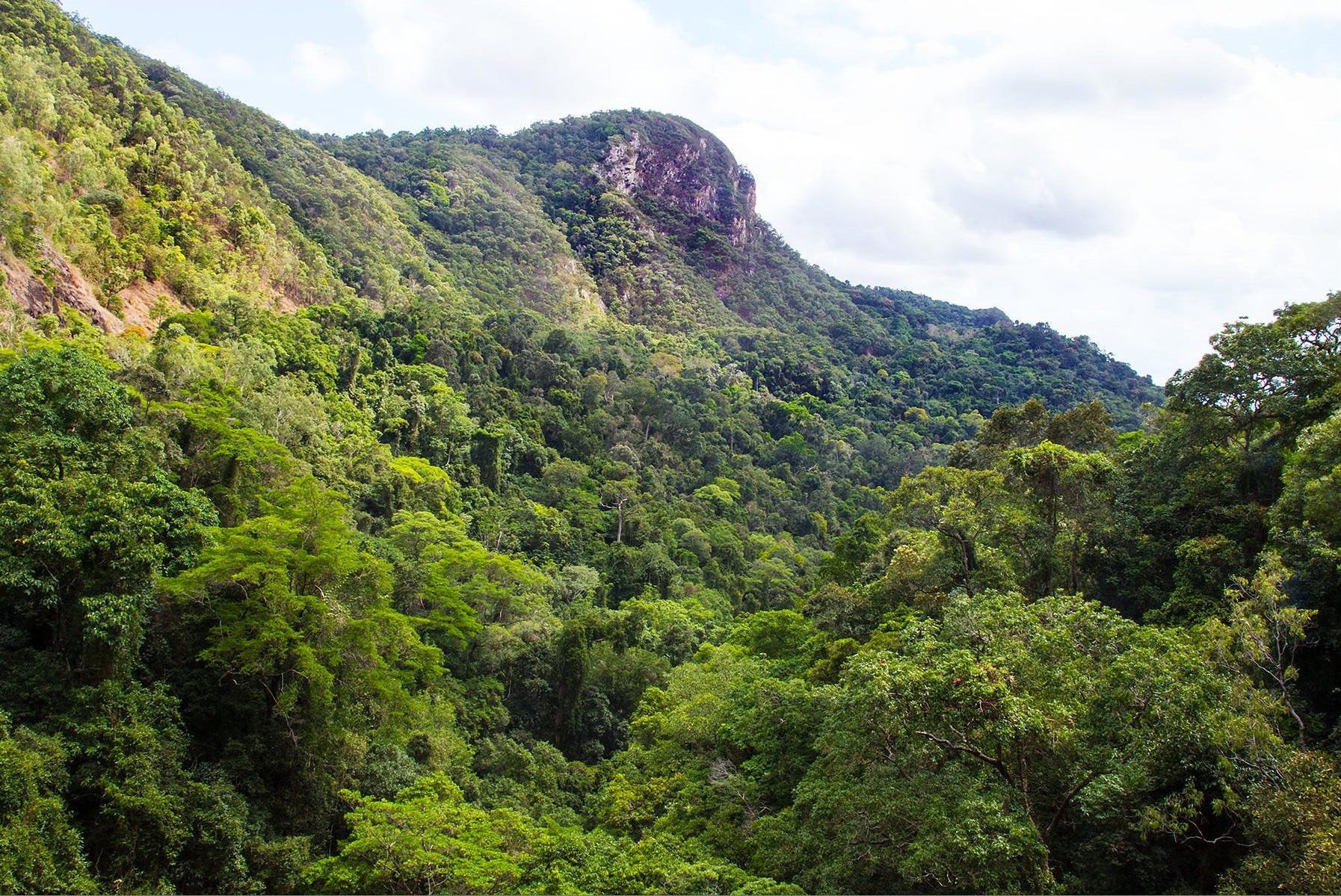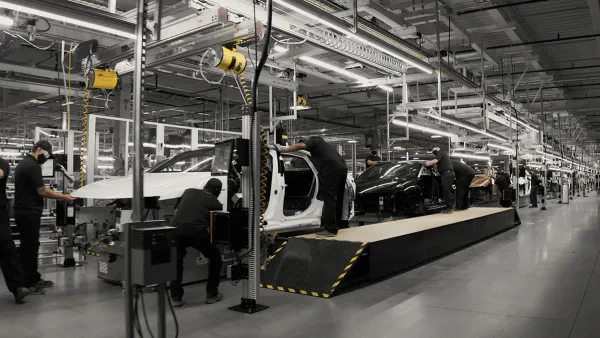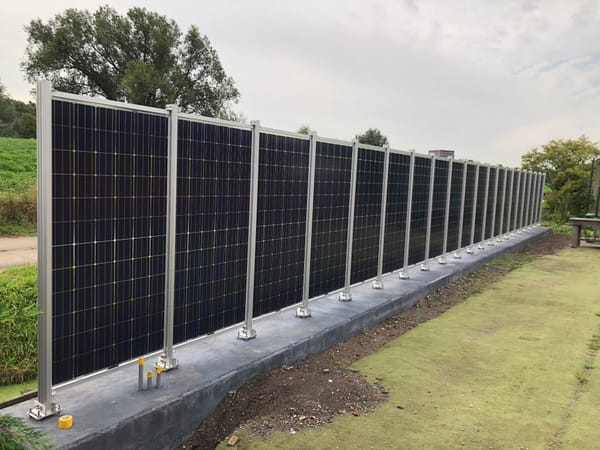The Trouble With Carbon Credits
Good Afternoon!
And here ends my first week of three-a-week newsletters. The format has been more of a deep dive, which I enjoy more, so I think I’m going to keep doing things this way. Although next week I’ll just have two, Monday and Wednesday, since I’ll be traveling on Friday.
Like what you see here? Please tell someone about it!

Carbon credits don’t work like commodities. And that’s causing big problems.
Let’s say you needed a whole lot of corn next December. The process for buying it is pretty straightforward. You can go to the Chicago Board of Trade and buy a future contract for December, for a minimum of 5,000 bushels priced (as of this morning) at $5.50 per bushel of corn. The value of the contract might go up or down over time, but if you hold onto the contract until December, you’ll have to go to one of the designated shipping locations, say Burns Harbor, Indiana, and pick up your 5,000 bushels of corn. If you didn’t have a truck, ship or rail car to take it away, the folks at Burns Harbor will get irate because they handle thousands of contract settlements each day, and without corn transportation, you’ll be jamming up their works.
When you stand back and look at it, corn futures are a pretty amazing thing. To make it all work, many different things have to work seamlessly and all the people dealing with the corn have to trust that it will work. From the farmer growing the corn, to people operating grain elevators, to traders buying and selling pieces of paper marked “corn”, to the person ultimately taking delivery and paying for the corn, there is an obscene amount of trust built into the process.
Of course, all those contracts are regulated by the U.S. Commodities Futures Trading Commission, but considering that there were well over 200,000 corn futures traded yesterday, the CFTC can’t stay on top of all that. The real thing that keeps it all together is honesty, transparency, and trust. And probably one more thing, which is that at the end of the process, someone gets a physical delivery of 5,000 bushels of corn. If corn deliveries didn’t arrive on a daily basis, probably all hell would break loose, and everyone would wonder, what are they actually trading?
This is basically the problem carbon credits are having.
The idea behind carbon credits is that since carbon-dioxide is ruining our atmosphere and causing climate change, we should put a price on each ton of carbon and then pay people for putting it somewhere, or “sequestering”, so that it won’t go into our atmosphere. There’s all kinds of ways you could sequester carbon, such as growing a bunch of trees, injecting it into old oil wells, or possibly putting it into concrete. Right now, there aren’t many carbon to ground injection projects, and putting it into “green” concrete sounds great, but that is also a nascent technology. So, these days most carbon credits come from countries promising to protect forests, peat bogs, and other natural carbon sinks.
For developing countries with large forests and not much income, carbon credits seem like a great way to find money to ensure their protection. And as those countries are being deforested, the clock seems to be ticking on how much forest can be protected..
So, let’s say your country wants to ensure a ton of carbon stays in a forest. National bureaucrats could estimate how many square hectares of forest makes up a ton of carbon. Then, said bureaucrats could use satellite imagery to map out which of those forest hectares would be set aside for carbon credits. Then, a national agency promises a private carbon credit verification company that nobody in your country will chop down those hectares of forest for 100 years. The private company converts that promise into a carbon credit, and then puts it up for sale on an exchange market. Next, a polluter that wants to feel better about themselves buys it. The exchange transfers money to your country’s treasury and your national bureaucrats and police force uses that money to protect the hectare of forest for 100 years.
Sounds great! Now, consider that the countries making these promises include countries with weak regulation like Brazil, Zimbabwe, and Indonesia. Do you think the promises of protection are being kept?
Few countries with vast forests have extensive experience with governmental honesty, transparency, or trust, which is what makes commodities markets work. For instance, while forest set asides are actually being set aside, other hectares of forest can’t be cut down to make up for the “set aside” parts. Or maybe there’s a whole bunch of human activity underneath a remote tree canopy that can’t be seen from space?
And surprise! The verification companies are having a hard time actually verifying the set asides, even in the U.S. and Australia. Meanwhile, there’s no real agreed upon regulatory process for carbon credit trading, so countries like Zimbabwe have set up dubious exchanges and then demand a major slice of revenue from all credits traded. Those exchanges have also become essentially conduits for payoffs to developing countries, like a recent Saudi purchase of Kenyan credits or a sale of Russian carbon credits through the Zimbabwean exchange.
Worse, who actually believes these sales represent actual chunks of forest that will stand untouched for a hundred years? Morgan Stanley says the carbon credit market will reach $100 billion by 2030, but the Wall Street Journal reports that 95% of traders don’t believe the credits are real.
The result is a total mess of pricing and a growing unease with the carbon credit process. Carbon credits sold on the European market, which are closely regulated, are selling for around €86 a ton, while credits sold on voluntary markets, like in Zimbabwe, range from $2.50 to 90-cents. Nobody really knows the true value of a carbon credit, because unlike a bushel of corn, there’s no international standard, and you can never be sure what exactly will be delivered.
There is no real precedent for solving this problem. Functioning futures or commodities markets today, like corn, oil, or gold, rely on the fact that traded “paper” commodities are ultimately converted to physical things. You can take delivery of your corn or oil, or look at your gold in a Swiss vault. If I were to buy a Kenyan carbon credit, how do I visit my plot of forest? What trustworthy registry operates to ensure that my plot is not overlapping with someone else’s?
Currently, all commodities trading operates within that country’s rule of law. American law protects the corn, you can rely on Netherlandic law for oil traded in Antwerp, English law for gold traded in London. For the aspiring carbon credit exchange in Victoria Falls, Zimbabwe, we’re supposed to rely on Zimbabwean rule of law, a country still wrestling with a massive state-sponsored farmland grab in the early 2000’s.
Up until now, exactly how carbon credits will be turned into a reliable commodity has been dealt with a lot of hand waving. Last month a group released new rules for voluntary markets, which were quickly criticized as weak. Maybe the World Bank will deal with it? Maybe we’ll get the world’s largest central banks to agree on a new carbon currency? Maybe it’ll get resolved by the U.N.’s global climate negotiations?
Other Things Happened
- Researchers estimate over 61,000 people died from last year’s European heat wave
- Scientists invented a really white paint that reflects 98% of the sun’s rays, cooling a surface as much as 8-degrees Fahrenheit.
- The U.S. National Weather Service has issued heat alerts for 115 million people in 15 states today. Many states are expected to see temperatures as high as 115-degrees Fahrenheit.
You made it to the bottom! Here’s a list of amazing, artistic small websites that do interesting things.





